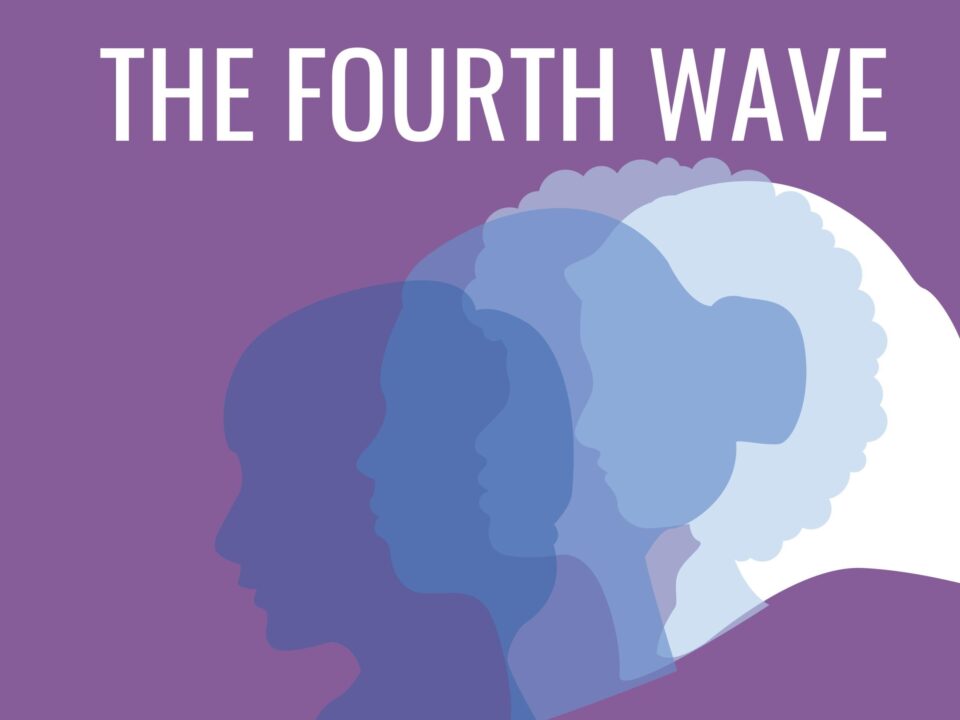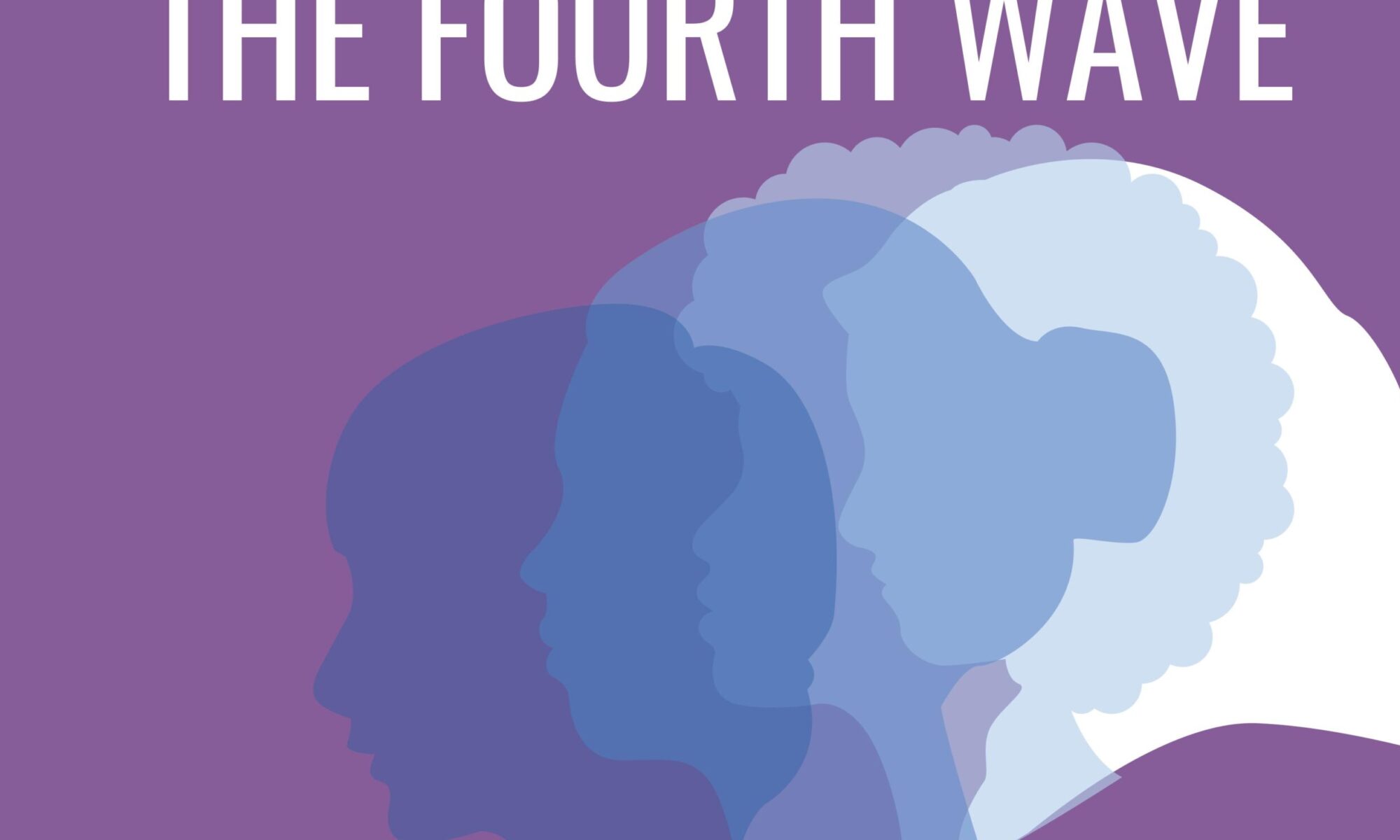
This guest column by St. Thomas alumna Maddie Peters is part of a series of editorials for Women’s History Month focused on women’s achievements on the St. Thomas campus and the intersectionality of modern feminism.
Appearance, through clothing and accessories, is the first clue into who we are as people. Whether it be a leather jacket or heeled shoes, bright red lipstick or a cowboy hat, how we adorn ourselves speaks volumes—in a nonverbal way, of course.
Trends go in and out of style, and in and out again. Personal style also shifts as a person ages or explores different or new facets of their personality. No matter the trend or style, however, clothing is a staple of expression. It is our identity made visible.
The history of fashion is long and complex, with culture and social dynamics sewn imperceptibly through it. The relationship between fashion and feminism is just one example of an evolving and layered history.
The mid-19th century style varies drastically from the clothes of today, as did the issues targeted by the movement. Back then (and unfortunately still today) feminism largely focused on white feminism, even when pertaining only to fashion.
With the intersectionality of feminism, however, clothing and the “look” of a feminist, of the movement, has grown.
Kimberlé Crenshaw coined the term “intersectional feminism” in 1989, which broadened the scope of the movement, particularly in highlighting people facing other inequalities, like those based in race, sexual orientation or class disparity. On top of this, society’s understanding of gender, specifically the social expectations and identity associated with them, has grown immensely and added yet another avenue for intersectionality.
The definition of gender is ever-changing. It is a socially constructed tool used to categorize humans into expected roles and behaviors. It varies between cultures and shifts over time.
Recently, the bounds of language surrounding gender have been pushed, with the increasing emphasis of pronouns and non-gendered or all-inclusive greetings.
Family and relationship dynamics are reimagined. The traditional American ideal of family is breaking down and, with it, so are the expectations of the “housewife” and “breadwinner” characters. Women can have careers, just as men can be stay-at-home dads. Women can choose to not have children entirely. Two individuals who identify as nonbinary can lead a family.
In society today, our understanding of gender is expanding immensely, largely due to gendered stereotypes breaking down. With this growth, so is our perception of clothing.
Expression through wardrobe opens the door to a deeper revelation of a person, and without the societally imposed meaning of clothing (suits being traditionally masculine, skirts being traditionally feminine, the use of color and pattern, etc.), people are free to explore how clothing reflects themselves, how clothing brings both confidence and comfort.
Clothing and accessories allow people to literally try on different identities. Many grow out of style phases, but finding the right “feel” for clothes changes everything. Even if the style is only experimental, people should have the opportunity to at least try it out.
Fashion trends, both for high-end and everyday styles, are experimenting with androgyny. Masculinity and femininity are products of historical and social structures. An open mindset toward clothing allows the space for experimentation. It even protects those who may not dress in accordance with previously held expectations.
The broadening of style acceptance offers space for cultural clothing to be worn. Whether this be historical or social or religious, people should be free to wear what reflects their identity and heritage. Part of this is the openness to natural hair, which remains a fighting point for many women and people of color, particularly among school dress codes and standards of “professionalism” in work spaces.
Stereotypes and pushback remain ever-present, as all movements and societal evolutions have faced, but for the most part, gender as a form of expression is expanding, largely due to fashion.
Hopefully though, as the fourth wave of feminism grows to represent and fight for other demographics than just white women, the acceptance of clothing and expression will grow, too.
Throughout feminism’s history, a woman’s presentation has been disputed. Should feminists embrace typically feminine qualities or style choices, like wearing makeup and heels, or should feminists push against this tradition and opt for more masculine or androgynous looks?
Expression of gender is broadening and, in the lens of feminism, does not mean one thing. The challenge for society, for self-proclaimed feminists and for the movement, we should be open to clothing choice. A woman can be a successful professional with or without makeup and should not be condemned either way. It should not be revolutionary for a woman to wear a suit, as a man wearing nail polish should not stir up an argument. Women who prefer more masculine or androgynous styles have a place in the movement just as more traditionally dress women do. Nonbinary people have a place. Anyone who wishes to express their cultural identity through fashion has a place. Clothing, and its use to express gender, provides a path for the movement to grow for both individuals and feminism as a whole.
Fashion’s history ultimately does carry symbolic and social meaning behind it, but with progress and open-mindedness, we can reduce the gendered viewing of clothes. After all, pieces of fabric stitched together carry no inherent meaning. We assign meaning, which implies we can assign no meaning. If clothing could be gender-neutral, everyone has the space to explore if they wish to. Better yet, everyone has the space to be whoever they wish to be, whether that identity and expression falls into traditional gender norms or not.
Hopefully, the movement will continue to diversify further, encompassing more demographics of women and others, and will strive for equality among all people. Hopefully, it will develop in light of our society’s current dissection of gender norms and expression. Clothing is an opportunity to accept and fight for all races and cultures, orientations and genders. Equality is to live without restraint. Equality is the right for unbridled expression.
As gender norms evolve, as gender develops into expression without norms, feminism must also evolve.
Angeline Terry can be reached at Terr2351@stthomas.edu.
Article courtesy of Maddie Peters, University of St. Thomas alumna.



